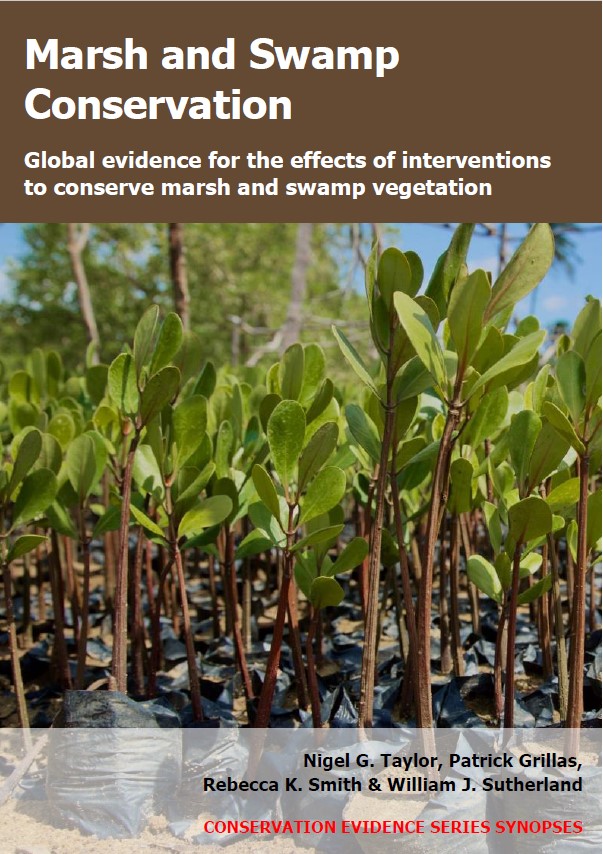Cut or burn oil-contaminated vegetation: brackish/salt marshes
-
Overall effectiveness category Likely to be ineffective or harmful
-
Number of studies: 2
View assessment score
Hide assessment score
How is the evidence assessed?
-
Effectiveness
20% -
Certainty
40% -
Harms
20%
Study locations
Supporting evidence from individual studies
A 1996 review of studies in brackish/salt marshes in the UK and the USA (Zengel & Michel 1996) reported mixed effects of cutting oil-contaminated vegetation on its recovery. Statistical significance was not assessed. Considering the eight cases that quantitatively compared cut and uncut areas in the field, the review suggests that cutting had no clear effect on vegetation abundance (density, biomass or cover) in four cases (50%) and a negative effect on vegetation abundance (biomass or cover) in four cases (50%). Across all 21 cases, the review suggests that “vegetation recovery” was positively affected by cutting in seven cases (33%), negatively affected by cutting in nine cases (43%), and not clearly affected by cutting in five cases (24%). These results should be interpreted carefully: the review does not report effect sizes, which may be more important than the number of studies reporting effects in a particular direction. Methods: The review included 21 cases, from 14 publications and at least 13 different marshes, in which oil-damaged vegetation in brackish/salt marshes was cut. Vegetation abundance, height or “recovery” (not clearly defined) were monitored between 14 weeks and 29 months after cutting (8–29 months after cutting for the eight quantitative studies).
Study and other actions testedA replicated, paired, controlled, site comparison study in 2007–2008 in two brackish/salt marshes in southern Brazil (Wolinski et al. 2011) found that cutting and removing smooth cordgrass Spartina alterniflora from oiled plots did not increase cordgrass biomass, density or height. Over the nine months following intervention, cut and uncut plots contained a similar above-ground cordgrass biomass in 5 of 8 comparisons (for which cut: 32–127; uncut: 61–159 g/m2), similar cordgrass densities in 7 of 9 comparisons (for which cut: 32–382; uncut: 35–372 plants/m2), and cordgrass of similar maximum height in 11 of 18 comparisons (for which cut: 43–102; uncut: 39–102 cm). In the other comparisons, cut plots contained less cordgrass biomass and fewer, shorter cordgrass plants. In all comparisons at least six months after intervention, all metrics (biomass, density and height) were statistically similar in cut plots, uncut plots and natural (undisturbed) plots (see original paper for data). Methods: Eighteen 2.5 x 2.5 m plots were established (in six sets of three) across two estuarine marshes (salinity: 12–34 ppt) dominated by smooth cordgrass. In December 2007, twelve plots (two plots/set) were sprayed with oil (ship fuel; 6 L/11 m2). One week later, vegetation was cut and removed from six of the oiled plots (one plot/set). The final six plots (one plot/set) were neither oiled nor cut. Smooth cordgrass within the plots was surveyed monthly until September 2008. To sample biomass, live cordgrass was cut, dried and weighed.
Study and other actions tested
Where has this evidence come from?
List of journals searched by synopsis
All the journals searched for all synopses
This Action forms part of the Action Synopsis:
Marsh and Swamp Conservation
Marsh and Swamp Conservation - Published 2021
Marsh and Swamp Synopsis





)_2023.JPG)














